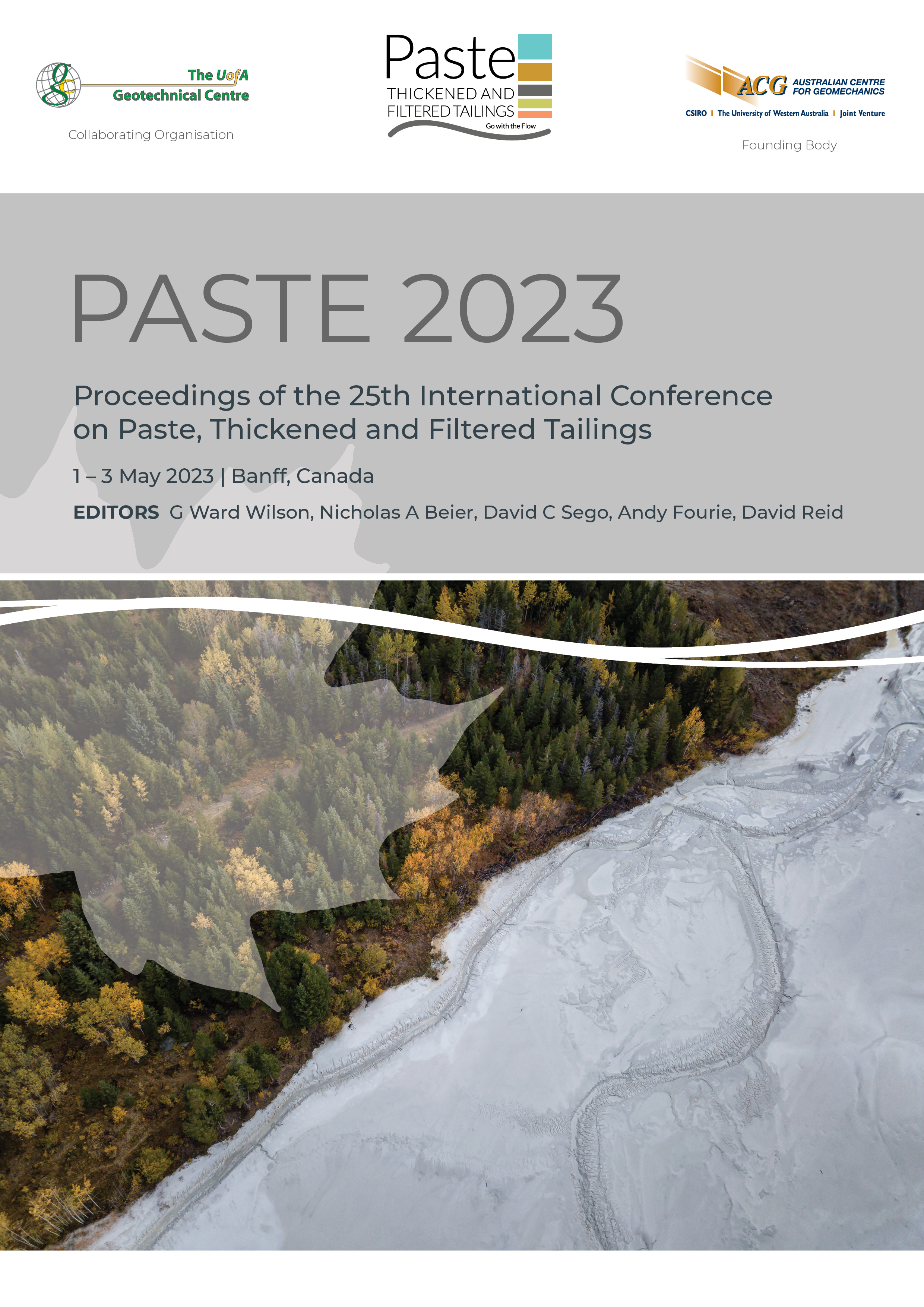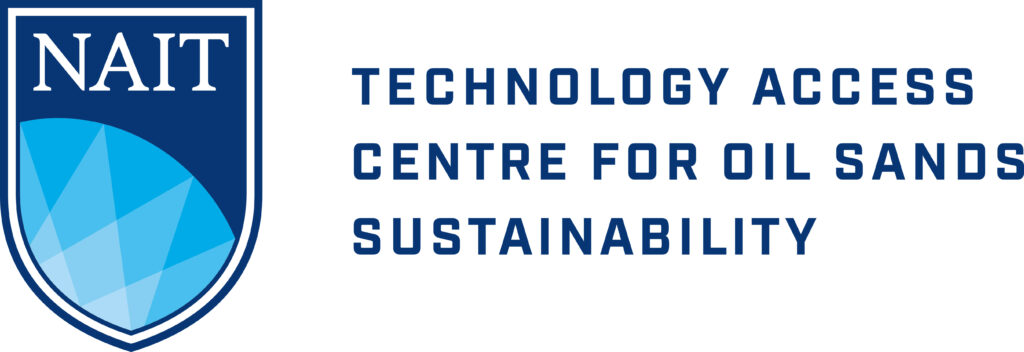Numerical procedure for scaling up pressure loss from mini flow loop tests

|
Authors: Kalonji, K; Mbonimpa, M; Belem, T; Ouellet, S; Gélinas, LP |
DOI https://doi.org/10.36487/ACG_repo/2355_10
Cite As:
Kalonji, K, Mbonimpa, M, Belem, T, Ouellet, S & Gélinas, LP 2023, 'Numerical procedure for scaling up pressure loss from mini flow loop tests', in GW Wilson, NA Beier, DC Sego, AB Fourie & D Reid (eds), Paste 2023: Proceedings of the 25th International Conference on Paste, Thickened and Filtered Tailings, Australian Centre for Geomechanics, Perth, pp. 140-153, https://doi.org/10.36487/ACG_repo/2355_10
Abstract:
Although in the literature friction factors have been developed specifically for Newtonian and non-Newtonian fluids to predict pressure loss during pipeline flow, their use for cemented paste backfills (CPB) still needs to be validated. For backfilling system feasibility studies, the flowability, pump selection and pumping requirement can be assessed through flow loop tests using full diameter (Dfull) pipeline arrangement. At the laboratory scale, only small flow loop tests using small diameter (Dsmall = Dloop) pipeline arrangement can be conducted. However, as the pressure loss (p/L) is closely dependent on the pipeline inner diameter (Di), p/L measured from a small flow loop test must be correctly scaled to the field pipeline diameter (Dfield = Dfull). The objective of this paper is to present a numerical simulations-based procedure for scaling up pressure loss from small flow loop tests. For this purpose, small flow loop tests were conducted using a 27.9 m-long pipeline circuit arrangement. The small pipe’s inner diameter (Dloop) was 0.0318 m. The pipeline circuit was instrumented with temperature probes (thermocouple) and a differential pressure meter for monitoring the evolution of the CPB temperature and pressure loss, respectively. After calibrating the non-isothermal pipe flow model in COMSOL Multiphysics® 5.2 software using temperature and pressure loss data gathered from the small flow loop tests, numerical simulations of flow loop tests were conducted to consider various filled inner diameters (Di) of pipes from 0.05 to 0.2 m) while keeping the rheological and thermal properties of the CPB unchanged. Results indicate a negative power law relationship between the pressure loss ratio and the inner diameter ratio (Di/Dloop). Work is still underway to verify if this relationship applies for different CPB mix recipes and different temperature conditions.
Keywords: cemented paste backfill, flow loop test, scaling up, numerical simulations, pressure loss, COMSOL Multiphysics
References:
Alves, MA, Baptista, A & Coelho, PM 2015, ‘Simplified method for estimating heat transfer coefficients: constant wall temperature case’, Heat and Mass Transfer, vol. 51, pp. 1041–104
Assefa, KM & Kaushal, DR 2015, ‘A comparative study of friction factor correlations for high concentrate slurry flow in smooth pipes’, Journal of Hydrology and Hydromechanics, vol. 63, pp. 13–20,
Barnes, HA, Hutton, JF & Walters, K 1989, An Introduction to Rheology, Elsevier Science Publishers, Amsterdam.
Belem, T & Benzaazoua, M 2008, ‘Design and application of underground mine paste backfill technology’, Geotechnical and Geological Engineering, vol. 26, pp. 147–174,
Beya, FK, Mbonimpa, M, Belem, T, Benzaazoua, M, Kalonji, K & Ouellet, S 2015, ‘Preliminary study of the influence of temperature and salinity on the thermal properties of hardening cemented paste backfill’, Proccedings of the 68th Canadian Geotechnical Conference, GeoQuebec 2015: Challenges from North to South, Québec, Canada, 20–23 September 2015.
Bird, RB, Stewart,WE & Lightfoot, EN 2002, Transport Phenomena, 2nd edn, John Wiley & Sons, Inc. New York.
Brackebusch, FW 1994, ‘Basics of paste backfill systems’, Minerals Engineering, vol. 46, pp. 1175–1178,
Clark, CC, Vickery, JD & Backer, RR 1995, Transport of Total Tailings Paste Backfill: Results of Full-Scale Pipe Test Loop, Report of Investigation, RI 9573, United States Buraeu of Mines, 37 p.
COMSOL 2012, COMSOL Multiphysics Reference Manual, COMSOL, Burlington, p. 750.
Cooke, R 2007, ‘Backfill pipeline distribution systems – design methodology review’, in F Hassani & J Archibald (eds), Proceedings of the 9th International Symposium on Mining with Backfill, Canadian Institute of Mining, Metallurgy and Petroleum, Westmount.
Cooke, R & Lazarus, JH 1993, ‘Hydraulic transport systems for the backfilling of deep mines’, Journal of the European Ceramic Society, vol. 93, pp. 25–30.
Cooke, R, Spearing, A & Gericke D 1992, ‘The influence of binder addition on the hydraulic transport of classified-tailings backfill’, in Journal of the Southern African Institute of Mining and Metallurgy, vol. 92, pp. 325–329.
Creber, KJ, McGuinness, M, Kermani, MF & Hassani, FP 2017, ‘Investigation into changes in pastefill properties during pipeline transport’, International Journal of Mineral Processing, vol. 163, pp. 35-44.
Cruz, DA, Coelho, PM & Alves, MA 2012, ‘A simplified method for calculating heat transfer coefficients and friction factors in laminar pipe flow of non-Newtonian fluids’, ASME: Journal of Heat Transfer, vol. 134,
Farshad, F, Rieke, H & Garber, J 2001, ‘New developments in surface roughness measurements, characterization and modeling fluid flow in pipe’, Journal of Petroleum Science and Engineering, vol. 29, pp. 139–150,
Ferrouillat, S, Bontemps, A, Ribeiro, JP, Gruss, JA & Soriano, O 2011, ‘Hydraulic and heat transfer study of SiO2/water nanofluids in horizontal tubes with imposed wall temperature boundary conditions’, International Journal of Heat and Fluid Flow, vol. 32, pp. 424–439,
Hassani, F & Archibald, JF 1998, Mine Backfill, Canadian Institute of Mining, Metallurgy and Petroleum, Montreal.
Incropera, FP, Dewitt, DP, Bergman, TL & Lavine, AS 2007, Fundamentals of Heat and Mass transfer, 6th edn, John Wiley & Sons, Hoboken.
Kalonji, K, Mbonimpa, M, Belem, T, Benzaazoua, M, Beya, F & Ouellet, S 2015, ‘Preliminary investigation of the effect of temperature and salinity on the rheological properties of fresh cemented paste backfills’, Proceedings of the 68th Canadian Geotechnical Conference, GeoQuebec 2015: Challenges from North to South, Québec, Canada, 20-23 September 2015.
Mezger, TG 2006, The Rheology Handbook for Users of Rotational and Oscillatory Rheometers, Vincentz Network GmbH & Co. KG, Hannover.
Pullum, L 2007, ‘Pipelining tailings, pastes and backfill’, in R Jewell & AB Fourie (eds), Paste 2007: Proceedings of the Tenth International Seminar on Paste and Thickened Tailings, Australian Centre for Geomechanics, Perth, pp. 113–127.
Swamee, PK & Aggarwal, N 2011, ‘Explicit equations for laminar flow of herschel-bulkley fluids’, Canadian Journal of Chemical Engineering, vol. 89, pp. 1426–1433,
Taylor, JB, Carrano, AL & Kandlikar, SG 2006, ‘Characterization of the effect of surface roughness and texture on fluid flow—past, present, and future’, International Journal of Thermal Sciences, vol. 45, p. 962–968.
Wagner, W 2010, ‘Heat transfer to non-Newtonian fluids’, in P Stephan, S Kabelac, M Kind, H Martin, D Mewes & K Schaber (eds), VDI Heat Atlas, 2nd edn, Springer-Verlag, Berlin.
Winter, HH 1987, ‘Viscous dissipation term in energy equations’, American Institute of Chemical Engineers, vol. 7, pp. 27–34.
Wu, D, Fall, M & Cai SJ 2013, ‘Coupling temperature, cement hydration and rheological behaviour of fresh cemented paste backfill’, Minerals Engineering, vol. 42, pp. 76–87,
© Copyright 2026, Australian Centre for Geomechanics (ACG), The University of Western Australia. All rights reserved.
View copyright/legal information
Please direct any queries or error reports to repository-acg@uwa.edu.au
View copyright/legal information
Please direct any queries or error reports to repository-acg@uwa.edu.au



